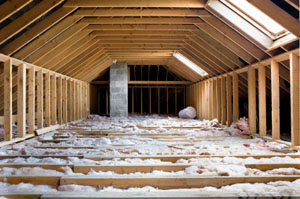Types of Blown In Insulation
Best Attic Insulation for Your Home
There are several types of blown in insulation, also known as loose fill insulation. Which one is the best for your attic, or small space depends on several factors. This style of insulation is suited to small spaces, and is often used for attic insulation, and provides a high R value with less thickness. Loose fill insulation is made from shredded or granulated material which is why it needs to be 'blown' into the space. Because of the 'loose' nature of the insulation it can be moved around by drafts and thus have an inconsistent R value depending on the thickness. It can 'settle' over time and require topping up down the track.

But first, let's see what the available options are: - Cellulose Insulation- is made from recycled newsprint, making it a good sustainable option. It generally has an R Value of 3.0 - 4.0 depending on thickness. Cellulose insulation is 'blown-in' style insulation and can be installed by the homeowner or a professional.
- Spray Foam Insulation (Soy)- made from soybeans and is able to fill all gaps and holes making it a better insulator. R Value is generally between 3.4 - 6.0. Soy insulation nees to be professionally installed and is not available as self-spray foam insulation.
- Fibreglass Loose Fill Insulation - is spun from molten glass into fibres with most manufacturers using 20 - 30% recycled glass content making it a sustainable option. Glass fibre as an issue when installing, so safety masks are required.
- Sheeps Wool - is available in loose fill form and has all of the insulative, moisture and fire retardant qualities known to wool, but is more expensive than other loose fill options.
- Rock Wool Loose Fill - (also known as slag wool) is produced from the waste of molten and other rock-like materials. The production of rock wool uses by-products that would otherwise be wasted, again making it a sustainable insulation type. It maintains its R Value over time, unlike some other blown in insulation types.
- Vermiculite- a granulated insulation used throughout the USA and UK. The US EPA launched a national consumer awareness program to alert the public to the risk of asbestos particles in a particular vermiculite insulation, known as Zonolite.
If you think you have vermiculite insulation and want to have it tested, please contact an 'Asbestos Consultant' or 'Asbestos Tester' to arrange tesing.
 Home from Types of Blown In Insualtion Home from Types of Blown In Insualtion
Energy Efficiency . Green News
Home | Site Map | Site Policies | Contact Me

|




